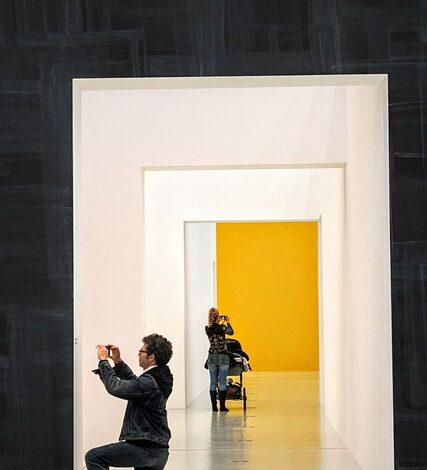The Rise of Virtual Art Galleries How Technology is Changing the Cultural Landscape

Introduction
In recent years, technology has been transforming various aspects of our lives, including the way we consume art. With the advent of virtual reality (VR) and augmented reality (AR) technologies, art galleries are no longer confined to physical spaces. Instead, they are now entering the digital realm, opening up new possibilities for artists, collectors, and art enthusiasts.

The Shift to Virtual Galleries
Traditionally, art galleries have been limited by physical constraints, such as location, space, and operating hours. However, with virtual galleries, these limitations are no longer relevant. Artists can now showcase their work to a global audience without the need for a physical space. Collectors can browse and purchase art from the comfort of their own homes. And art enthusiasts can explore a wide range of artwork from different artists and genres without having to travel to different locations.

The Benefits of Virtual Galleries
One of the key benefits of virtual galleries is accessibility. People from all over the world can now access and experience art that they may not have had the opportunity to see otherwise. This democratization of art has opened up new possibilities for artists to reach a global audience and for art enthusiasts to discover new and emerging talent.

Another benefit of virtual galleries is the immersive experience they provide. Through VR and AR technologies, users can explore virtual galleries as if they were walking through a physical space. They can zoom in on artwork, read about the artist’s inspiration, and even interact with other users in real-time. This level of interactivity adds a new dimension to the way we experience and engage with art.

Challenges and Concerns
While virtual galleries offer many benefits, they also raise some concerns. One of the primary concerns is the authenticity of the artwork. With the rise of digital art and NFTs (non-fungible tokens), there is a question of how to authenticate and verify the ownership of digital artworks. This has led to debates about the value of digital art and the role of traditional art institutions in the digital age.

Another challenge is the potential for virtual galleries to replace physical galleries altogether. While virtual galleries provide new opportunities for artists, collectors, and art enthusiasts, they also raise questions about the role of physical spaces in the art world. Physical galleries offer a unique and immersive experience that cannot be replicated in the digital realm. As virtual galleries continue to grow in popularity, it will be important to find a balance between the two and ensure that both physical and virtual spaces coexist harmoniously.

The Future of Art Galleries
As technology continues to advance, the future of art galleries is likely to be a hybrid of physical and virtual spaces. Physical galleries will remain important for showcasing artwork in a tactile and immersive way, while virtual galleries will provide new opportunities for artists to reach a global audience and for art enthusiasts to explore and discover art from the comfort of their own homes.

Ultimately, the rise of virtual art galleries is a testament to the ever-evolving nature of the art world. Technology has always been a driving force behind cultural change, and virtual galleries are just one example of how technology is reshaping the way we create, consume, and experience art. Whether you prefer to visit a physical gallery or explore a virtual one, one thing is certain: the future of art is bound to be exciting and full of possibilities.

